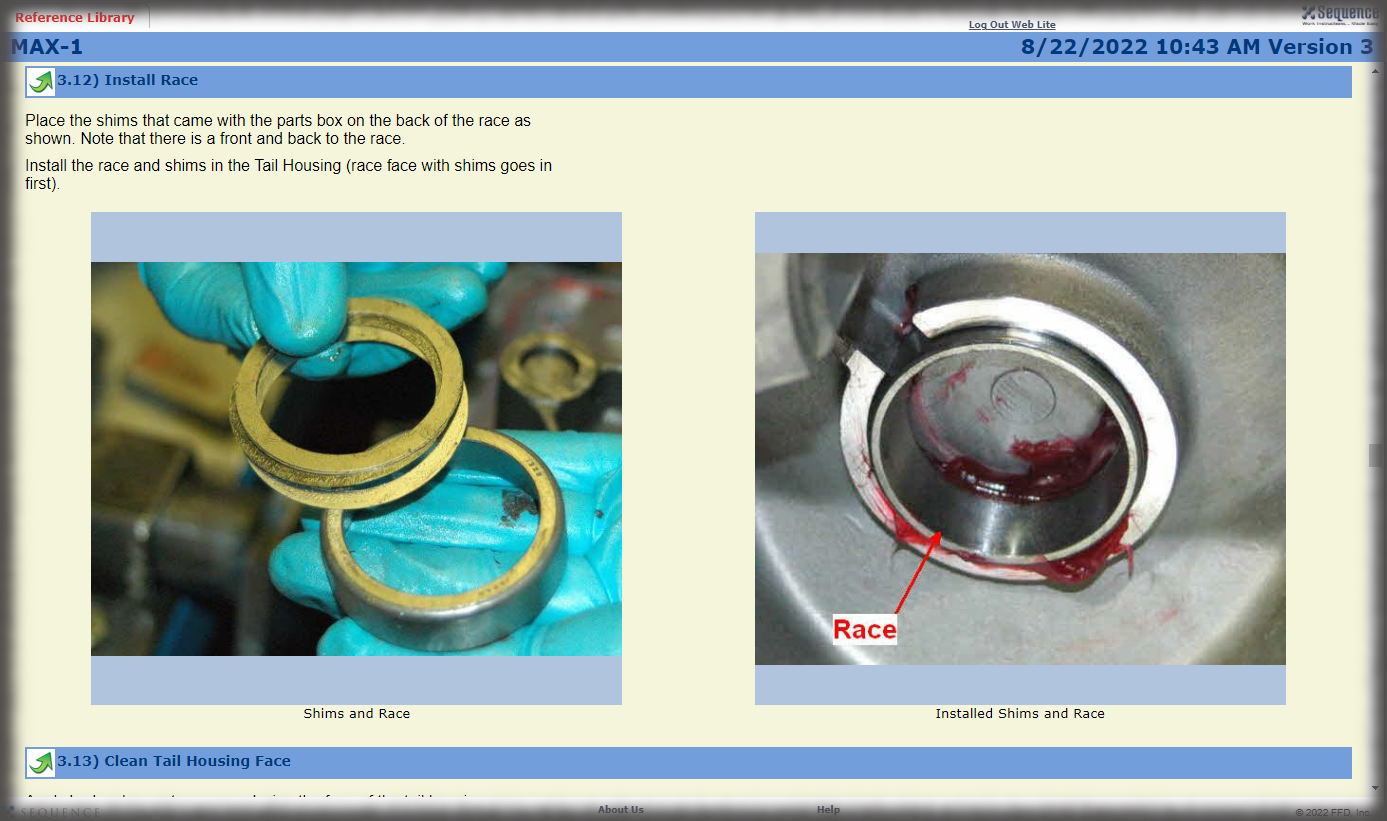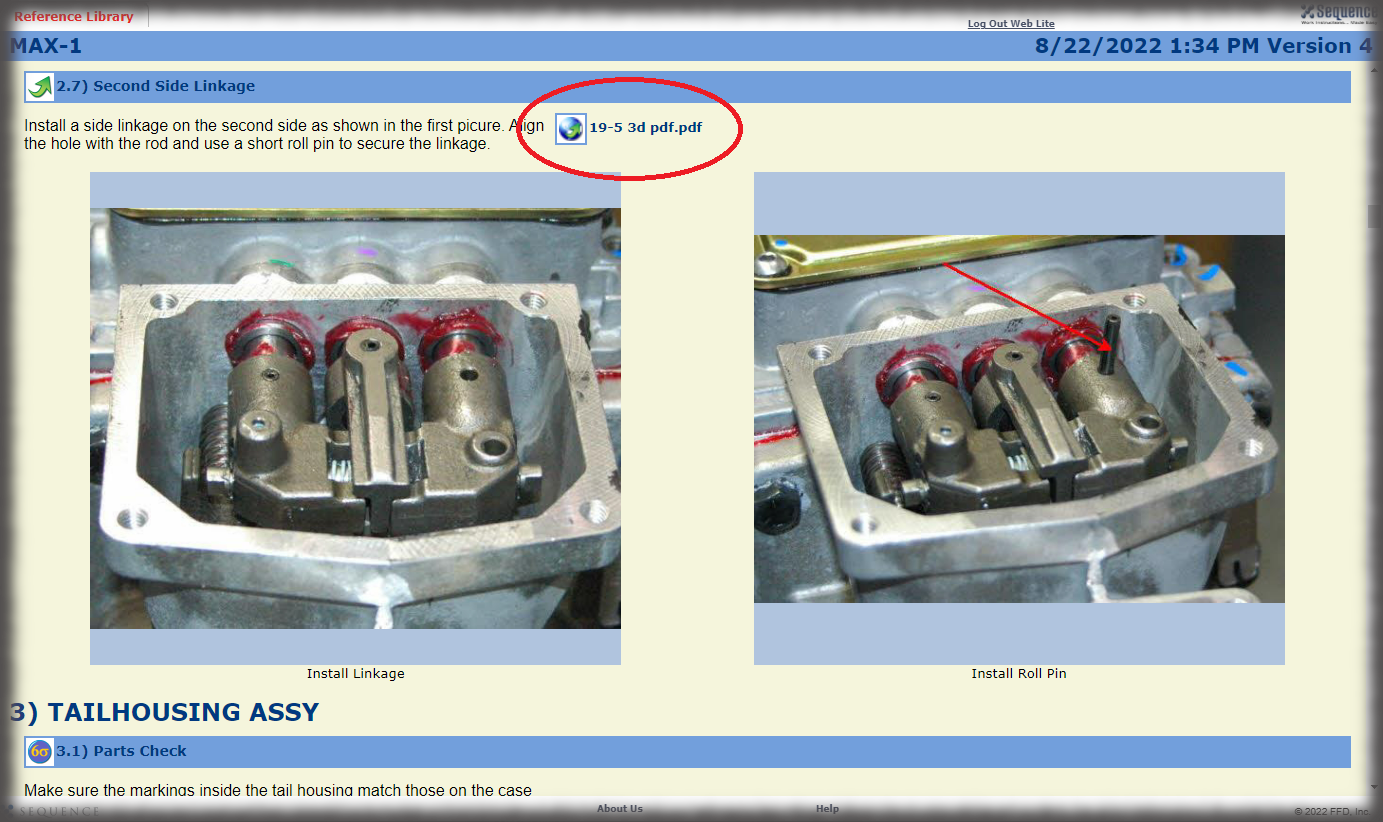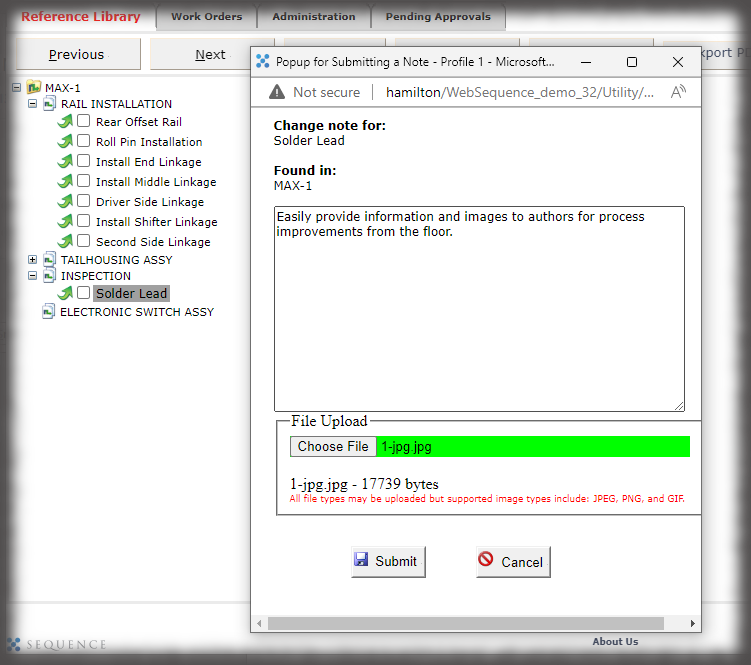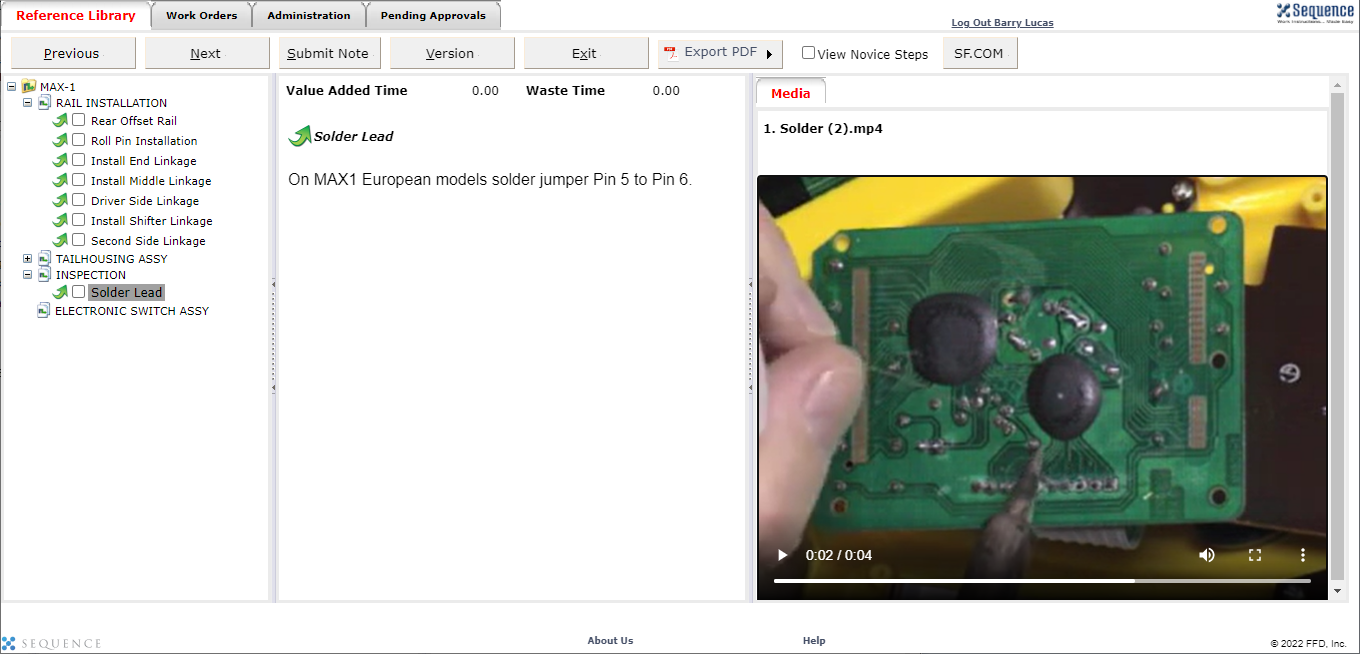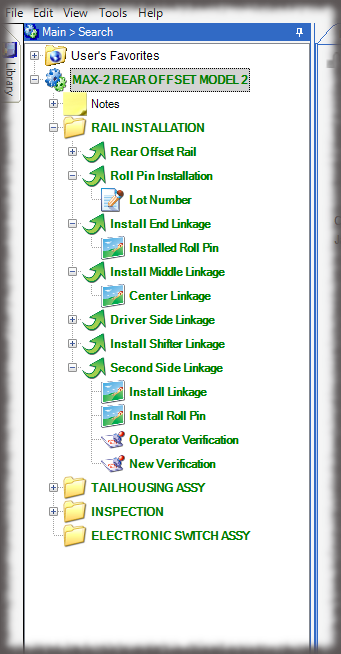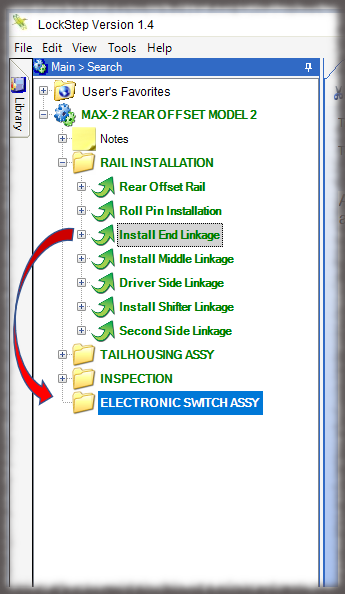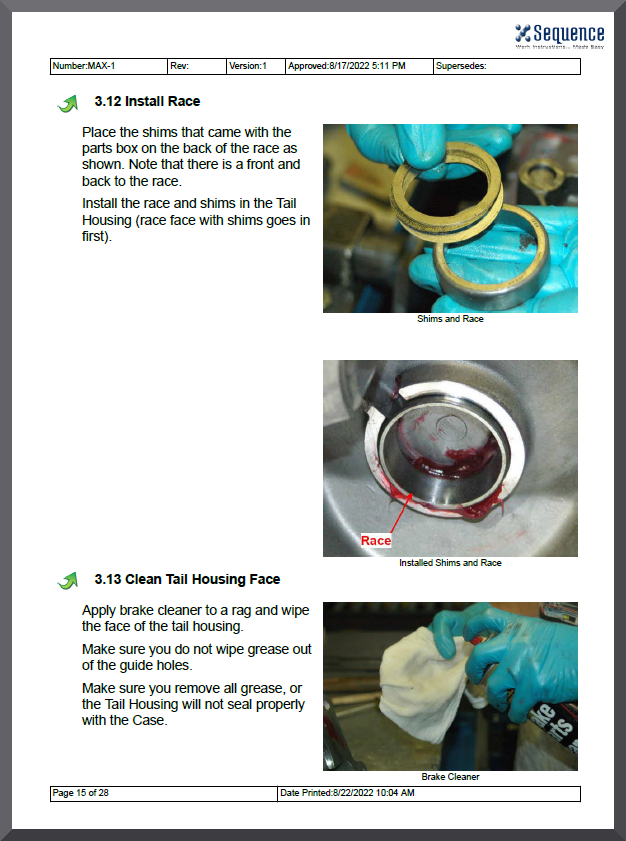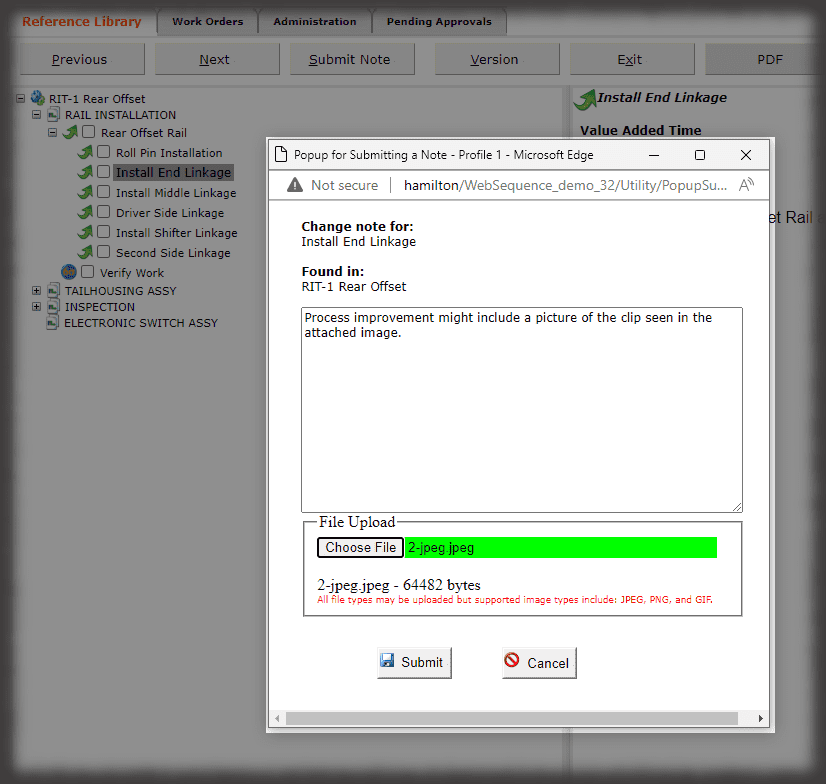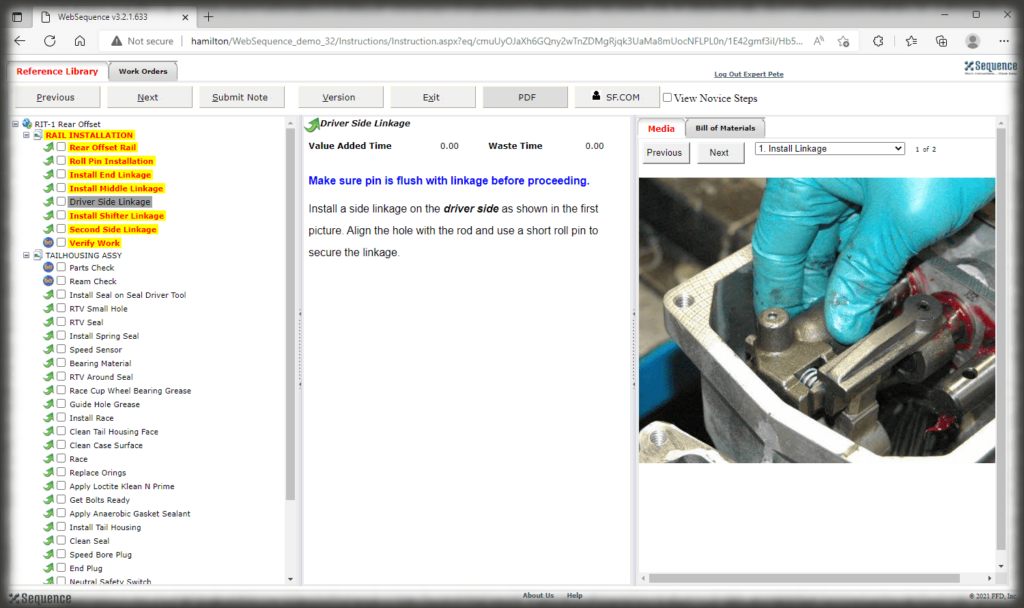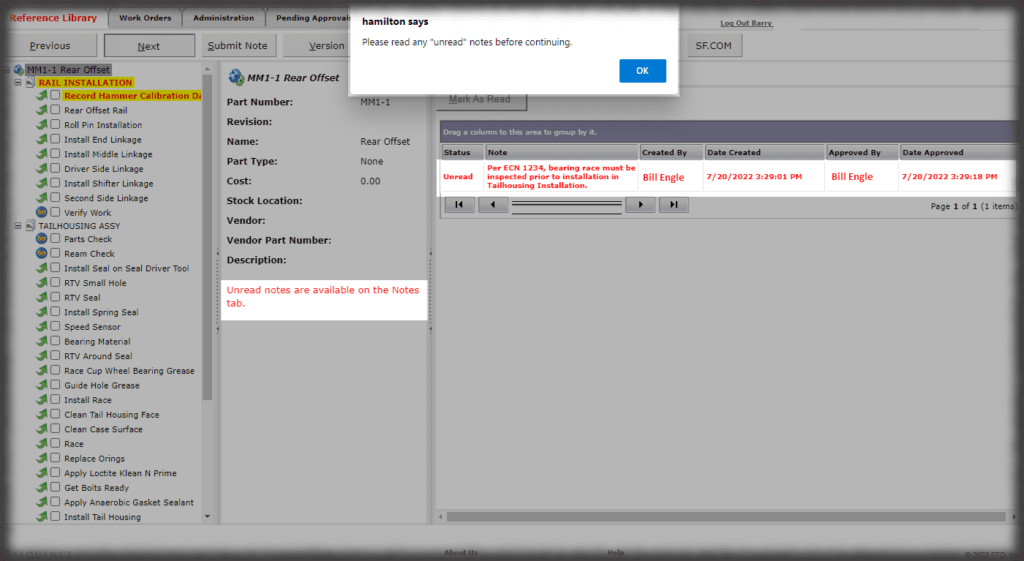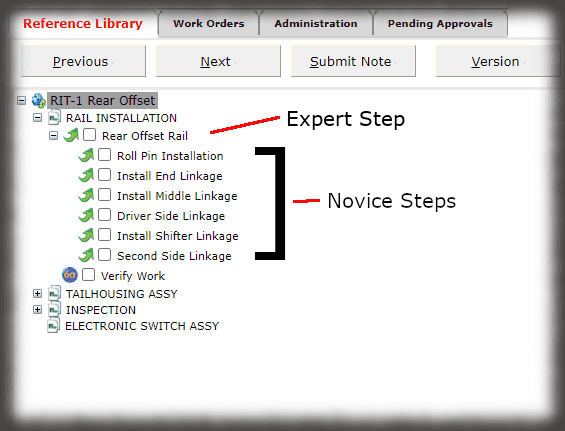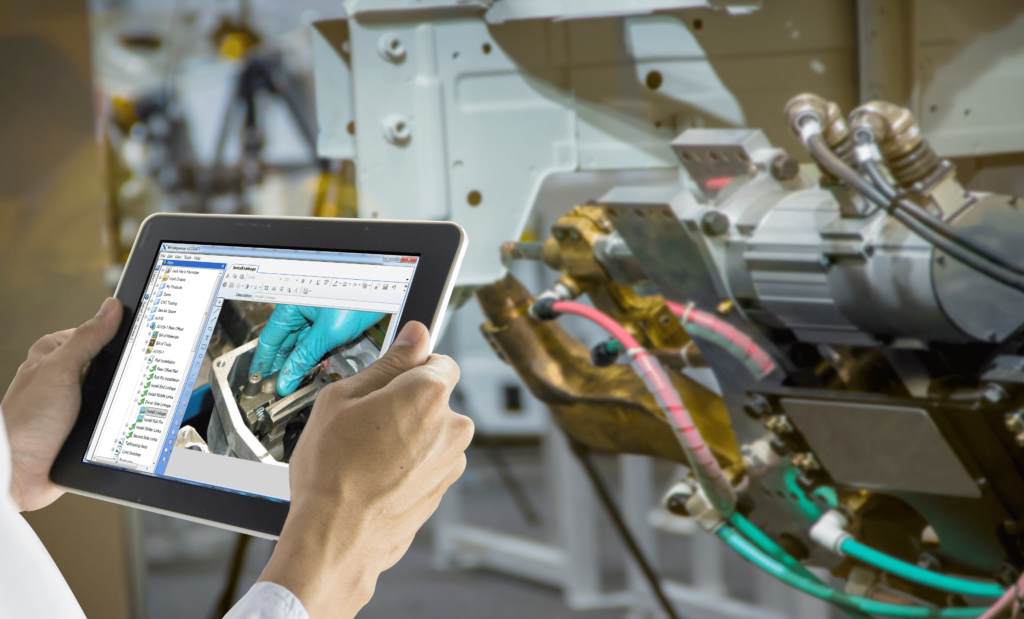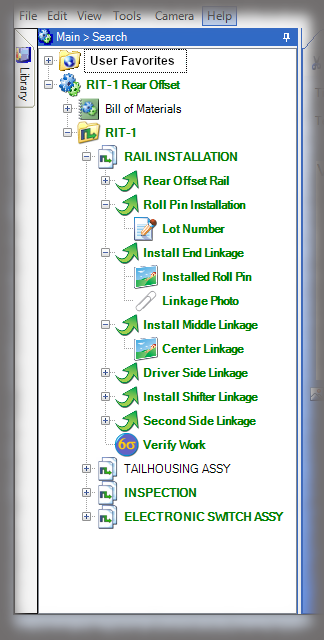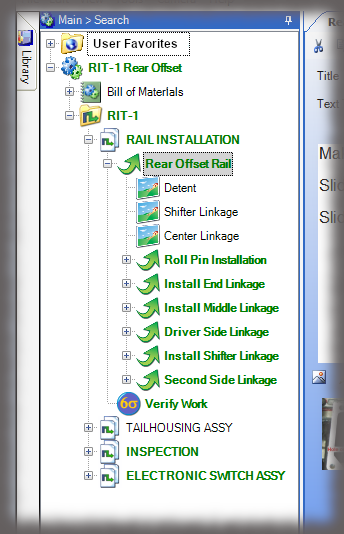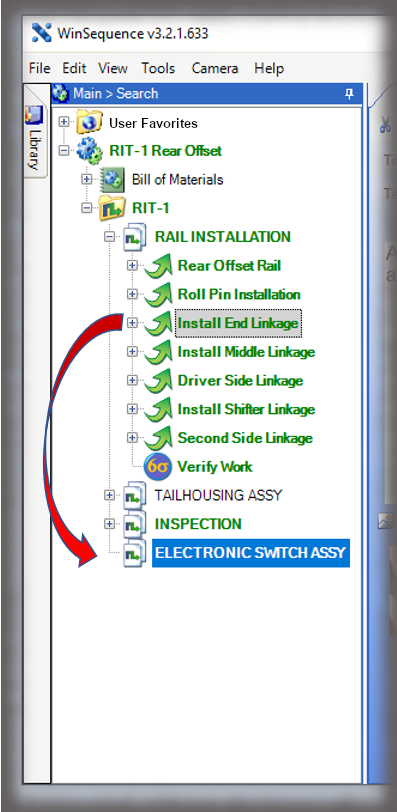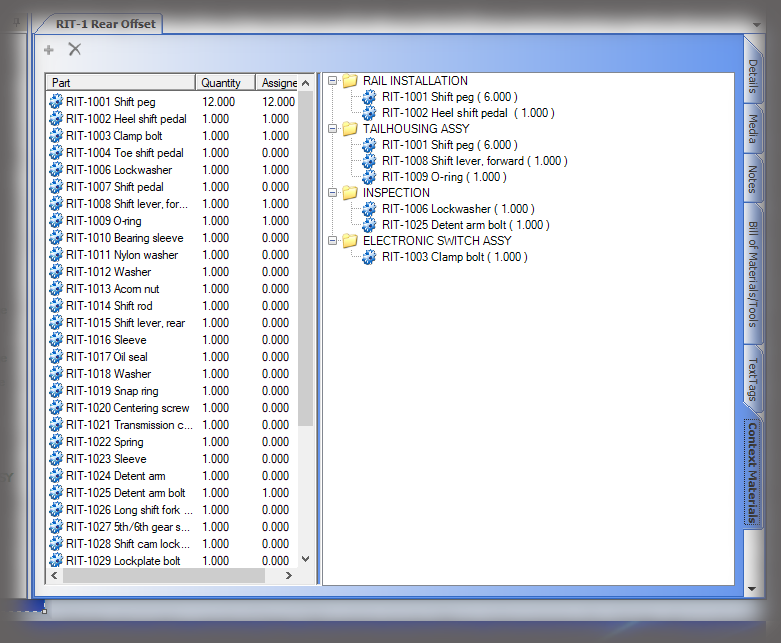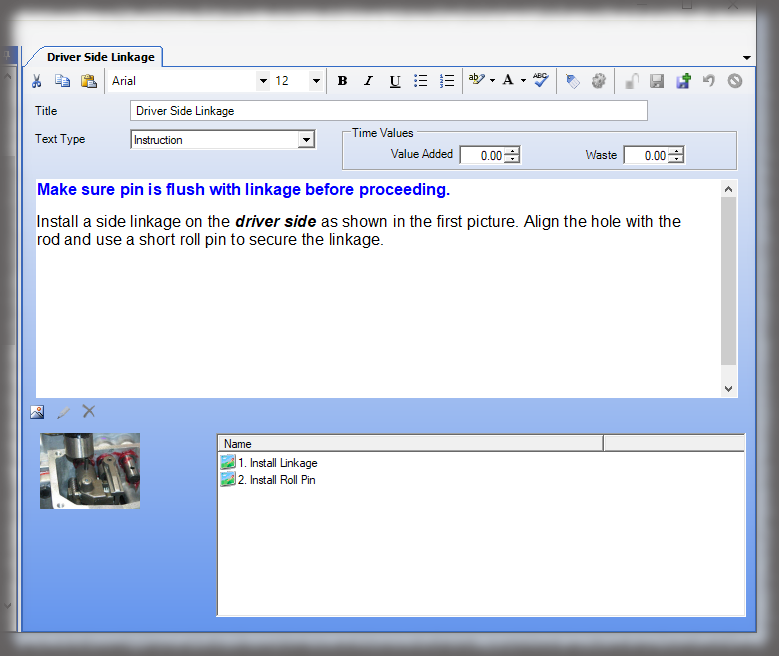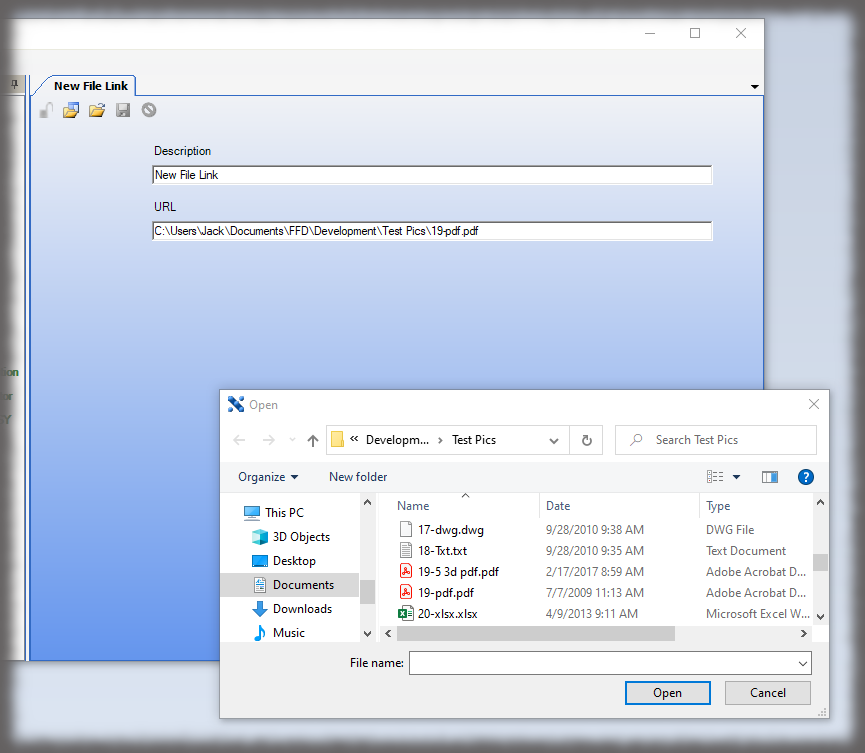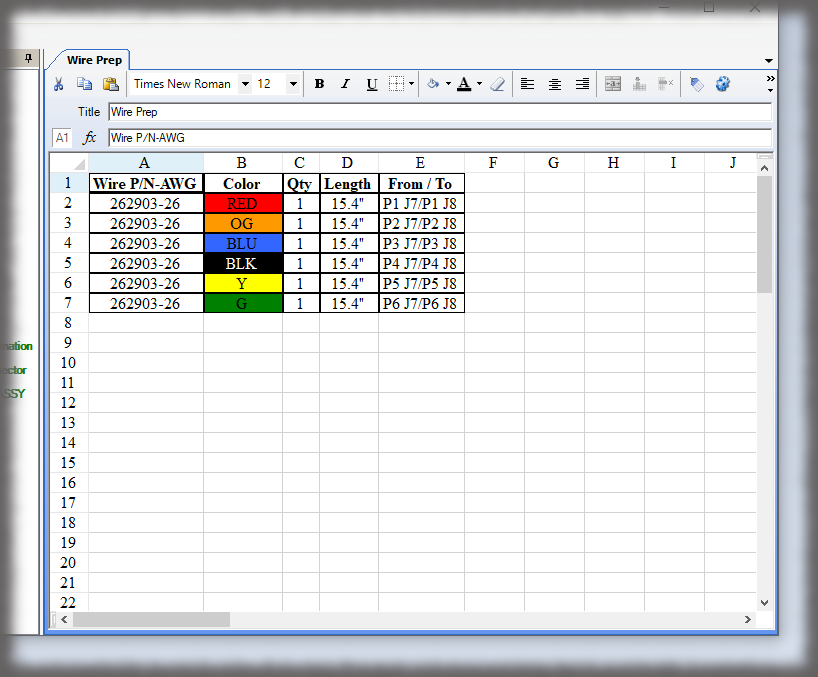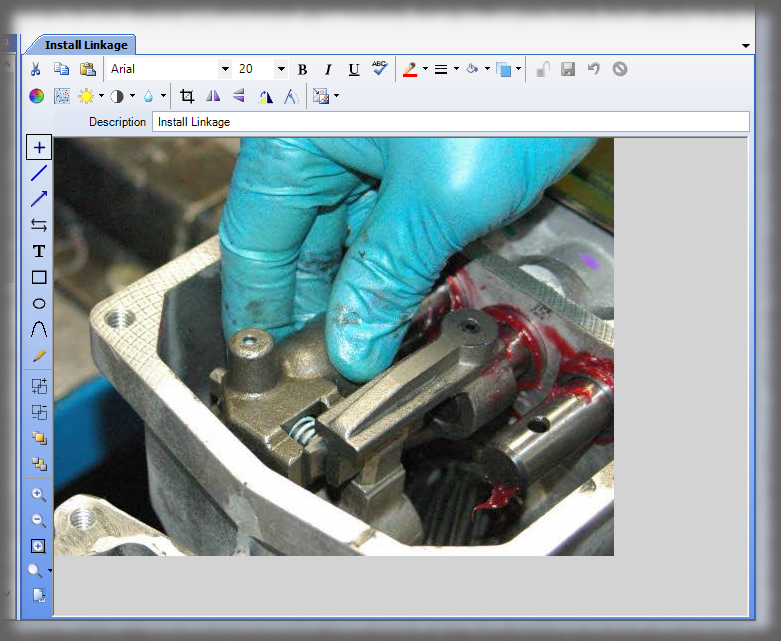There was a time when emails from manufacturing engineers commonly had “green belt” or “black belt” in the signature, referring to the sender’s level of training in the Six Sigma continuous improvement process. While the titles have become passé and do not appear in email signatures any longer, the core elements of continuous improvement are certainly not dead or passé.
Continuously improving your manufacturing processes and the work instructions that support them starts with knowing what’s happening on the shop floor. Without seeing the complex work contributing to the big picture, it’s hard to identify the practical, tactical improvements that will make the most impact on business outcomes. Gemba Walks are a continuous improvement method intended to help leaders tie real manufacturing processes to data. Gemba Walks help leaders gain key perspective on processes and procedures and connect with workers. Even if using the term Gemba Walks might reveal one’s age, read on—you might recognize some of these principles are embedded or should be embedded in your company culture.
What is a Gemba Walk?
Gemba is a Japanese word meaning “the actual place.” In the context of Lean and Six Sigma, a Gemba Walk means taking the time to watch how processes are done and talking with workers completing the tasks. Gemba Walks are intended to help executives and managers see the difference between their assumptions and reality.
It’s important to note that Gemba Walks are intended to be listening tools. They turn the focus on the operation and the employees conducting the manufacturing process to inform decision-making, rather than data sheets. They are not intended as a means to supervise and enforce specific work instructions or to test process improvements. Gemba Walks inform managers, not employees. For example, say you’re on a plant tour with a plant manager, you may notice the manager excuse themselves or stop to speak with an associate. While there are a variety of reasons that manager may speak with that employee, typically the manager is inquiring about something that didn’t look right and they wanted to check with the associate about the process.
What Are the Key Elements of a Gemba Walk?
Gemba Walks began at Toyota, a groundbreaking leader in continuous improvement methods, and according to Toyota Chairman Fujio Cho the Gemba Walk’s three key elements are: “Go see, ask why, show respect.”
Go see. The essence of the Gemba Walk is the gemba—the shop floor. Walking the shop floor and actually seeing whether your manufacturing process designs are functioning as intended is the critical first step. Seeing workers in process to understand if they have everything they need to attain objectives is another critical element.
Ask why. There is a big difference between asking why manufacturing workers complete a process the way they do or why something is inefficient and asking why they aren’t following prescribed work instructions. Always ask with the intention of learning the root cause of process issues and problem solving, not disciplining.
Show respect. Done poorly, Gemba Walks have the potential to create panic on the shop floor. Gemba Walks are not about attributing blame. Respecting the people on the shop floor and trusting that they have reasons for their methods is the key to ensuring Gemba Walks don’t just improve processes and work instructions, they improve company culture and leadership.
Six Steps for a Successful Gemba Walk
1. Plan Your Improvement
A Gemba Walk without intention is almost guaranteed to fail. Before management hits the shop floor, they need to know what ‘theme’ or process improvement they’re focusing on. This could be safety, wasted time or materials, or simply trying to understand why productivity numbers won’t budge in a particular area.
By planning your improvement, you pinpoint what manufacturing processes you want to observe and which shop floor workers you want to talk to. You should also make a list of questions for your Gemba Walk, and vet that they are respectful and involve workers in identifying the root of process issues.
2. Get Multiple Perspectives
Involving more than one manager—particularly different levels of management—in a Gemba Walk can help you gain valuable perspective and insight. People closer or further from the process can begin to shed light on its downstream effects.
The Gemba Walk can both help improve the process you had planned and also improve different areas of the business or help resolve friction. Sales might gain new insights into features and benefits, or a data officer might be inspired to measure new metrics. Just be sure to limit the Gemba Walk team to a manageable size so workers aren’t overwhelmed, and everyone can still unobtrusively observe processes.
3. Prepare Your Manufacturing Team
Never spring a Gemba Walk on shop floor team members without notice. Remember—the object isn’t to catch them in the act of circumventing established processes. It’s to understand why they perform work the way they do. Make sure to communicate this objective to them and reinforce the idea that the Gemba Walk is an opportunity for the manufacturing team to contribute ideas and communicate issues.
You might even consider sharing your questions with the shop floor team before conducting the Gemba Walk. This gives them the opportunity to carefully consider the ‘why’ of what they do and imagine a better way. Scheduling regular Gemba Walks and making them a key part of your Lean or Six Sigma process not only benefits continuous improvement, but it also shows commitment and respect to shop floor workers.
4. Observe First, Then Ask
Yes, a Gemba Walk is about understanding, and to do that, you must ask questions. However, questions can be emailed or answered over the phone. The purpose of the Gemba is to observe. You might find that many of the questions you initially had become obvious when observing the process. Your established questions might also be moot, or simply not the right questions to get to real process improvement.
Do respect the wealth of knowledge that manufacturing employees have and be humble about understanding the shop floor work, though. Asking questions that might seem obvious to shop floor workers sheds light on management’s assumptions and knowledge gaps—precisely the intention of the Gemba Walk.
5. Evaluate Processes, Not People
For a Gemba Walk to be successful, you must reinforce that this is an evaluation of the process, not how well people perform the process. For shop floor workers to be open and candid about how they conduct work, they need to know that they themselves are not being assessed.
Noting your observations without offering feedback is a key way to demonstrate this difference. If you have process improvement ideas, write them down and evaluate them later—don’t suggest them on the spot. Advice on a Gemba Walk often comes across as a critique and undermines your purpose.
6. Close the Loop with Manufacturing Workers
Gemba Walks are meant to combat management isolation and connect business objectives with manufacturing processes. Observing, evaluating the manufacturing floor, and then issuing changes from on high undermines the Gemba Walk’s intention. Returning to the shop floor to communicate the Gemba Walk’s results and proffer ideas for process improvement allows manufacturing workers to correct any assumptions and head off any unrealistic solutions.
Simply reflecting back to employees what you saw and understood—even if you don’t have current solutions—improves company culture and can give them a better sense of management’s perspective.
How Do Gemba Walks Improve Work Instructions?
Gemba Walks demonstrate the difference between what should be happening in manufacturing processes and what is happening. They show managers and executives the gaps in their knowledge and the gaps in processes—whether workers have found a better means of completing manufacturing tasks or if the established process has significant unanticipated downsides.
Interviews, videos, and insights from Gemba Walks can be incorporated into digital work instructions using work instruction software. Sequence Software simplifies using these tools as well as changes to process improvement by empowering the people closest to the work. Reviewing work instructions in Sequence Software before—or even during—a Gemba Walk makes identifying the difference between assumptions and reality easy.
No matter what you call the practice, Sequence Software has continuous improvement features to help close the loop on your Gemba Walks. If you are ready to reduce errors, improve efficiency, and save on costs, reach out to us today to find out more about our digital work instructions options. Give us a call at 866-863-7541 or request a demo online.


